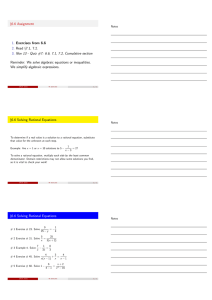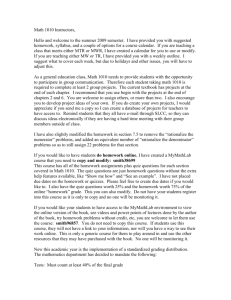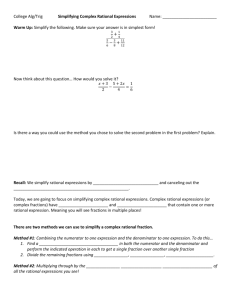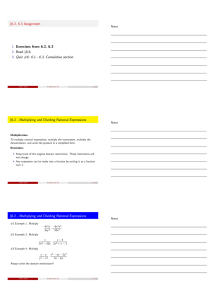§6.1 Assignment §6.1 - Rational Expressions and Functions 1. 2.
advertisement
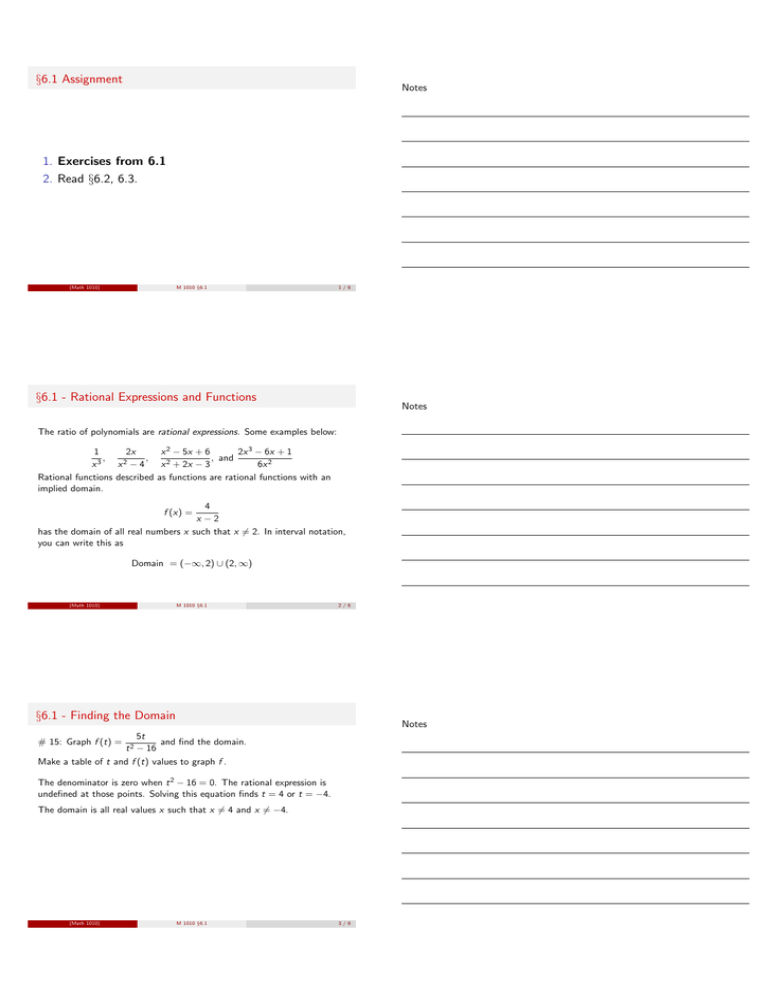
§6.1 Assignment Notes 1. Exercises from 6.1 2. Read §6.2, 6.3. M 1010 §6.1 (Math 1010) 1/6 §6.1 - Rational Expressions and Functions Notes The ratio of polynomials are rational expressions. Some examples below: 1 2x x 2 − 5x + 6 2x 3 − 6x + 1 , , , and x3 x2 − 4 x 2 + 2x − 3 6x 2 Rational functions described as functions are rational functions with an implied domain. 4 x −2 has the domain of all real numbers x such that x 6= 2. In interval notation, you can write this as f (x) = Domain = (−∞, 2) ∪ (2, ∞) (Math 1010) M 1010 §6.1 2/6 §6.1 - Finding the Domain Notes 5t # 15: Graph f (t) = 2 and find the domain. t − 16 Make a table of t and f (t) values to graph f . The denominator is zero when t 2 − 16 = 0. The rational expression is undefined at those points. Solving this equation finds t = 4 or t = −4. The domain is all real values x such that x 6= 4 and x 6= −4. (Math 1010) M 1010 §6.1 3/6 §6.1 - Simplifying Rational Expressions Notes Simplified or reduced form is a rational expression whose numerator and denominator have no common factors. Factor each, then divide out by common factors. 1. Completely factor the numerator and denominator. 2. Divide out common factors to both the numerator and denominator. Tip: Divide out by factors, not terms. Examples: 2·2 2 (1) = 2(x + 5) (x + 5) (2) 3+x no common factors divide out 3 + 2x M 1010 §6.1 (Math 1010) 4/6 §6.1 Examples - Finding Domains Notes 4 # 3: Find the domain of f (x) = x −3 # 14: Find the domain of g (x) = x3 x(x + 2) Application: Example 3 You have started a small business that manufactures lamps. The initial investment is $120,000. The cost of manufacturing each lamp is $15. What is the average cost C̄ (x) of producing x lamps, and what is the domain of C̄ (x)? M 1010 §6.1 (Math 1010) 5/6 §6.1 Examples - Simplifying Rational Expressions # 51: Simplify x 2 (x − 8) x(x − 8) # 61: Simplify y 3 − 4y 5xy + 3x 2 y 2 # 75: Simplify y 2 + 4y − 12 xy 3 (Math 1010) M 1010 §6.1 Notes 6/6
